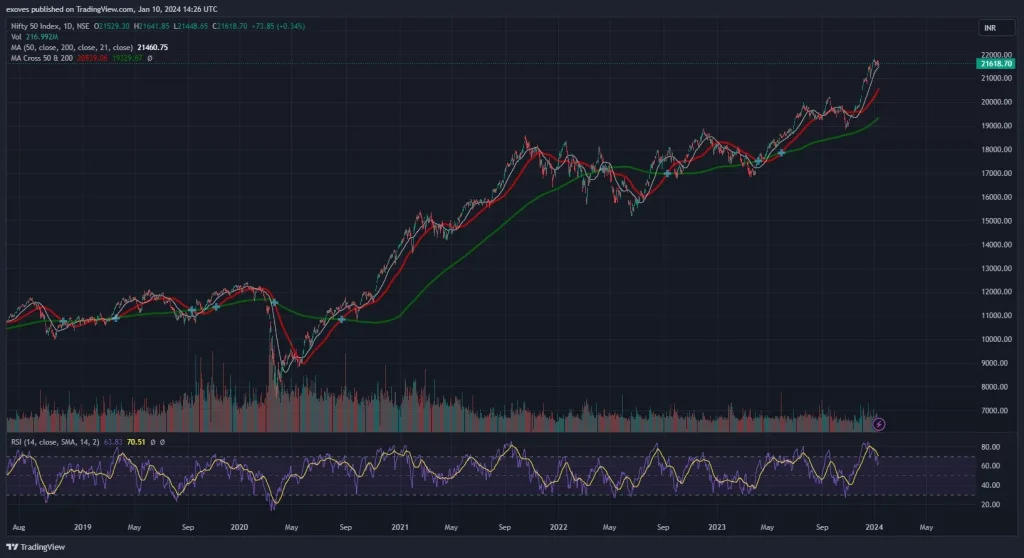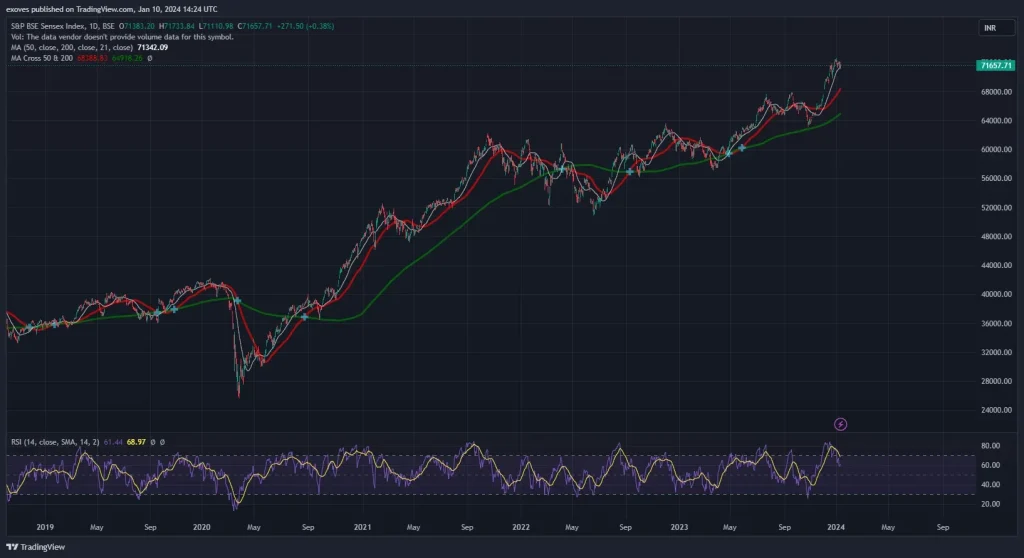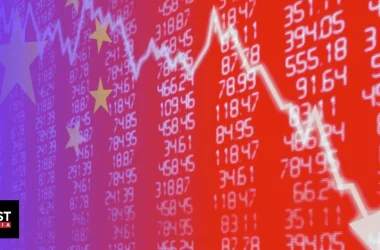Very recently, India celebrated its stock market valuation reaching an unprecedented $4 trillion for the first time, marking a key milestone for the world’s fifth largest equity market as it very quickly narrows the gap with Hong Kong.
This growth is fueled by the Indian economy, which is expected to surpass both Japan and Germany and become the world’s third largest economy in 2027. India would be unstoppable if it manages to pull this off, as it’s economic growth already stands out despite the challenging macro environment.
India’s Growth Story
The National Stock Exchange of India Limited reached this impressive valuation as the market capitalization of companies listed on India’s exchanges gained $1 trillion in value over less than three years. This represents a tripling of its value since the 2020 pandemic low.
India’s key stock benchmarks are currently trading at an all-time high, having risen more than 13% throughout 2023. Now they are heading for their eighth straight year of gains. Meanwhile, Hong Kong’s key stock benchmarks have fallen 17%, with the market’s total value dropping to less than $4.7 trillion.
India’s growth is thanks to its robust economy and political stability achieved by the recent victory of Prime Minister Narendra Modi’s party in state elections. Earlier this year, India surpassed China and became the world’s most populous country, emerging as the fastest-growing major economy. This year, India’s economy is expected to expand by 6.3%.
The two markets’ very different performances can be explained by India’s economic growth. According to Morgan Stanley, India is set to become the world’s third largest economy by 2027, surpassing both Japan and Germany. Not only is this very attractive to investors, but its a sign of how resilient India’s economy is given that its achieving this growth in the midst of a slowing global economy. Currently, India is set to be one of just three economies to generate more than $400 billion annually. After 2028, India is expected to start generating $500 billion per year.
China’s Economic Slowdown Helps India
India has been trying to attract foreign investors to its capital markets as foreign investors and companies flee China – India’s main rival in Asia. The truth is, China is scarier than ever for foreign investors as the country struggles with its real estate debt crisis. Geopolitical tensions between the U.S. and China have also scared off investors, and as a result China reported a negative foreign direct investment balance of $11.8 billion in November. This was the first time its reported a negative balance since it opened its economy to the world in 1998.
China’s troubles allowed India to take center stage, attracting foreign direct investment equal to $9.5 billion. Positioning itself as China’s replacement revived inflows of foreign investment to India. Foreign investment in local stocks reached over $15 billion in 2023, while domestic investments totaled more than $20 billion thanks to a boom in retail trading following the pandemic.
This could mark India’s transition from an economy dependent on consumption which currently accounts for 60% of its GDP – to an economy led by consumption as well as investment.
Is India’s Stock Market too Expensive?
However, there is still one problem with the Indian stock market that some foreign investors just can’t get around – it’s too expensive. In fact, valuations for popular blue-chip stocks are sky-high. This means, investors pick and choose sectors such as auto and technology while avoiding banks and blue-chip firms.
The benchmark Indian stock market index – Nifty 50 (INDEXNSE: NIFTY_50) – represents the weighted average of 50 of the largest Indian companies listed on the National Stock Exchange, closed 2023 up more than 19%.

The blue-chip BSE Sensex (INDEXBOM: SENSEX) – a market index of 30 well-established companies listed on the Bombay Stock Exchange – also closed the year up roughly 17%.

Foreigners pulled roughly $17 billion from India in 2022 but have returned in full force throughout 2023. By September of 2023, global investors had bought $17.2 billion worth of Indian stocks on a net basis through September 1st, 2023.

Foreign investors’ buying spree coincided with a pull back from domestic investors who have turned to other savings options as returns on benchmark 10-year bonds reach more than 7% and bank deposits earn roughly 7%. In other words, equities are starting to become more expensive for local investors, compared to other investing alternatives that are considered safer.
How Big Can India’s Stock Market Get?
India benefits from so many factors. Its economy is growing while the rest of the world struggles, and its population of 1.43 billion people represents a giant pool of potential workers and consumers that companies can tap into both domestically and abroad.
Urban middle class citizens’ disposable incomes are consistently increasing, and India can make use of that as more locals invest in stocks in addition to foreign investors. At the same time, the economy is growing rapidly which will in turn grows India’s stock market. Morgan Stanley noted that the Bombay Stock Exchange could deliver 11% annual growth – even reaching a market capitalization of $10 trillion in the coming decade.
However, while India is helped by the slowdown in China and Hong Kong, it shouldn’t completely depend on that. When compared to the U.S. stock market, Indian equities trade at a premium of about 70%, while U.S. peers trade at a premium of around 10%. Other broader emerging markets also trade at 10% premiums. In other words, most Indian stocks are incredibly overvalued.
Not everyone believes in India’s stock market as a long term investment. According to Anuj Arora, Chief Investment Officer of the emerging markets and Asia-Pacific team at JPMorgan Asset Management, Indian equities have traded at similar valuations on four occasions in the past 30 years “and each time they resulted in a five-year period of stagnation”.
Despite this cautionary remark, Indian stocks are still expected to receive about $1.5 billion from foreign institutional investors once India’s weightage in the MSCI Standard Index for emerging markets increases. Once the US Federal Retirement Thrift Investment Board switches to a new MSCI index which includes India for its International Stock Index Investment Fund, another $3.8 billion is expected to hit the Indian stock market
However foreign investors, are facing a capital gains tax of 15% on Indian equities held for less than a year and 10% for positions held for longer. On top of this, India enforces foreign ownership limits on many stocks which affects fund managers ability to invest.
While its right to be cautious given India’s history of stagnation following the overvaluation of its equities, the country’s growth story is very compelling. As foreign investors increasingly view India as an alternative to China, its economy will continue to grow and the value of its markets as well.
Disclaimer
Please visit and read our disclaimer here.









